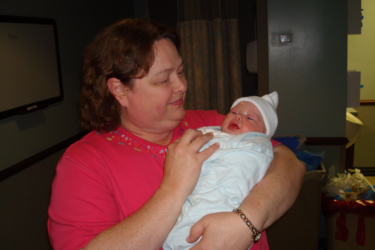
To Cry or Not To Cry
Inside the womb, babies sleep most of the time. They are snug and warm and don’t need to worry about breathing or digestion. The outside world is different. Itʼs a bit cold and cruel to them, and many babies seem to struggle with their new reality of hunger, wet diapers, and bright lights.
Everyone expects some sleepless nights in the newborn period as baby adjusts to the world and to the concept that sleep should be a nighttime activity. By the age of four months, most babies no longer need to eat every few hours and should be capable of sleeping through the night (or at least six hours in a row). Getting baby to a point where he sleeps well, in a safe sleep environment, is one of our most basic tasks as parents; it is also, commonly, a huge challenge.
The key to success is to start early. In the first few months, start letting baby fall asleep on his own. Holding, talking, and interacting are essential to his brain growth and sense of attachment. Feeding, rocking, and cuddling are all great, but put him down before he completely falls asleep. Let him lie down in his crib feeling tired, full, and loved to drift off to sleep without a nipple in his mouth. Relying on nursing or a bottle is not only bad for teeth, but the child who grows accustomed to that isn’t going to know what to do with himself when he wakes up in the middle of the night without something to suck on.
This can be hard. Some babies do not consent to this plan, and as soon as you put them down, their little eyes pop open, and they start crying. Allowing a baby younger than four months old to cry for a prolonged period without responding is inappropriate, but many infants will actually self-soothe within a few minutes if given a chance.
There are many books and resources available to advise parents about sleep. Elizabeth Pantley’s No Cry Sleep Solution is popular. Richard Ferber’s method, from his 1985 book Solve Your Child’s Sleep Problems, involves letting the child cry himself to sleep while reassuring him at increasingly longer intervals. There is no solid evidence to suggest that any particular process is the superior one. The best approach depends on the temperaments of the child and parents.
A common theme amongst all sleep experts is that a consistent bedtime routine is a must. The routine, such as “eating–bath–story time–soft music–bed,” should be a consistent pattern of events happening at the same time every night to signal to the child that it’s time for bed.
Children like rituals and routines; they make them feel secure. The child who “fights” sleep may ultimately just have to cry it out some, but the crying it out will go much easier and faster if a consistent bedtime routine is put into place first. Once the decision is made to let a child cry it out, it’s very important to be consistent. Parents should be together on this. If one parent “caves” after an hour and picks the child up, the message has been given to the child that, if he cries long enough, someone will rescue him. Repeating this the next night would just be confusing and unfair.
Every child and every family situation is different, so the approach to sleep problems should be individualized. Ask your pediatrician for help, and also consider consulting a developmental pediatrician or sleep specialist. Adequate sleep is critical to good physical and mental health. Children need rest to grow and develop, and we all need sleep to boost our immune systems. Sleep is fuel for good parenting as well, strengthening skills like patience, playfulness, and perseverance. Don’t settle for being tired all the time! ■





